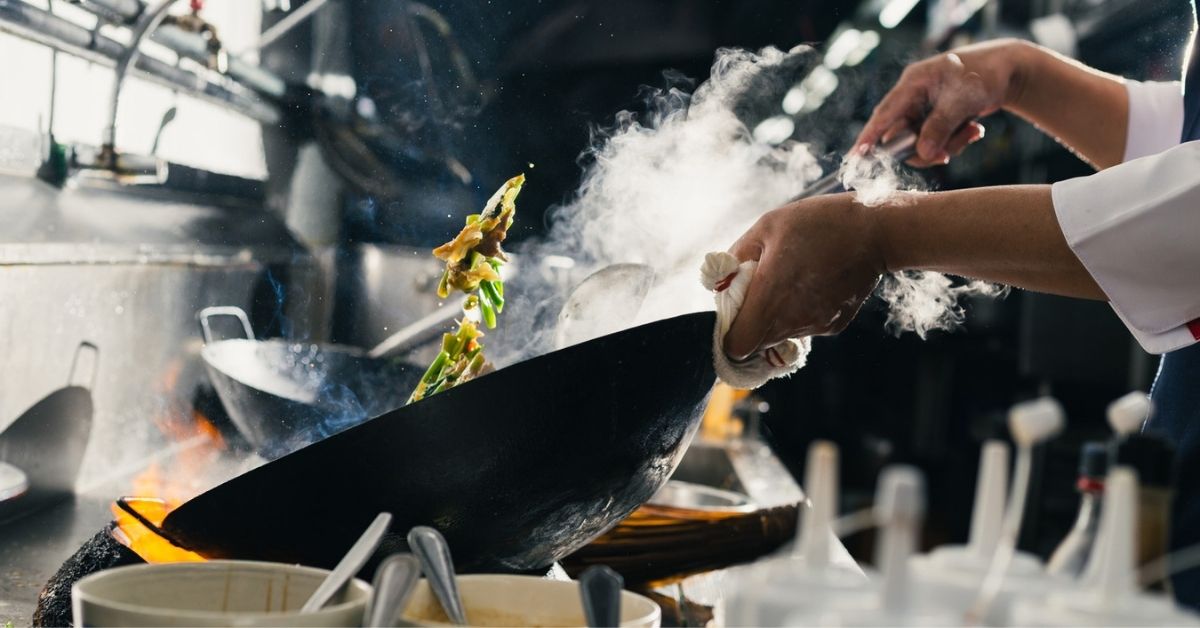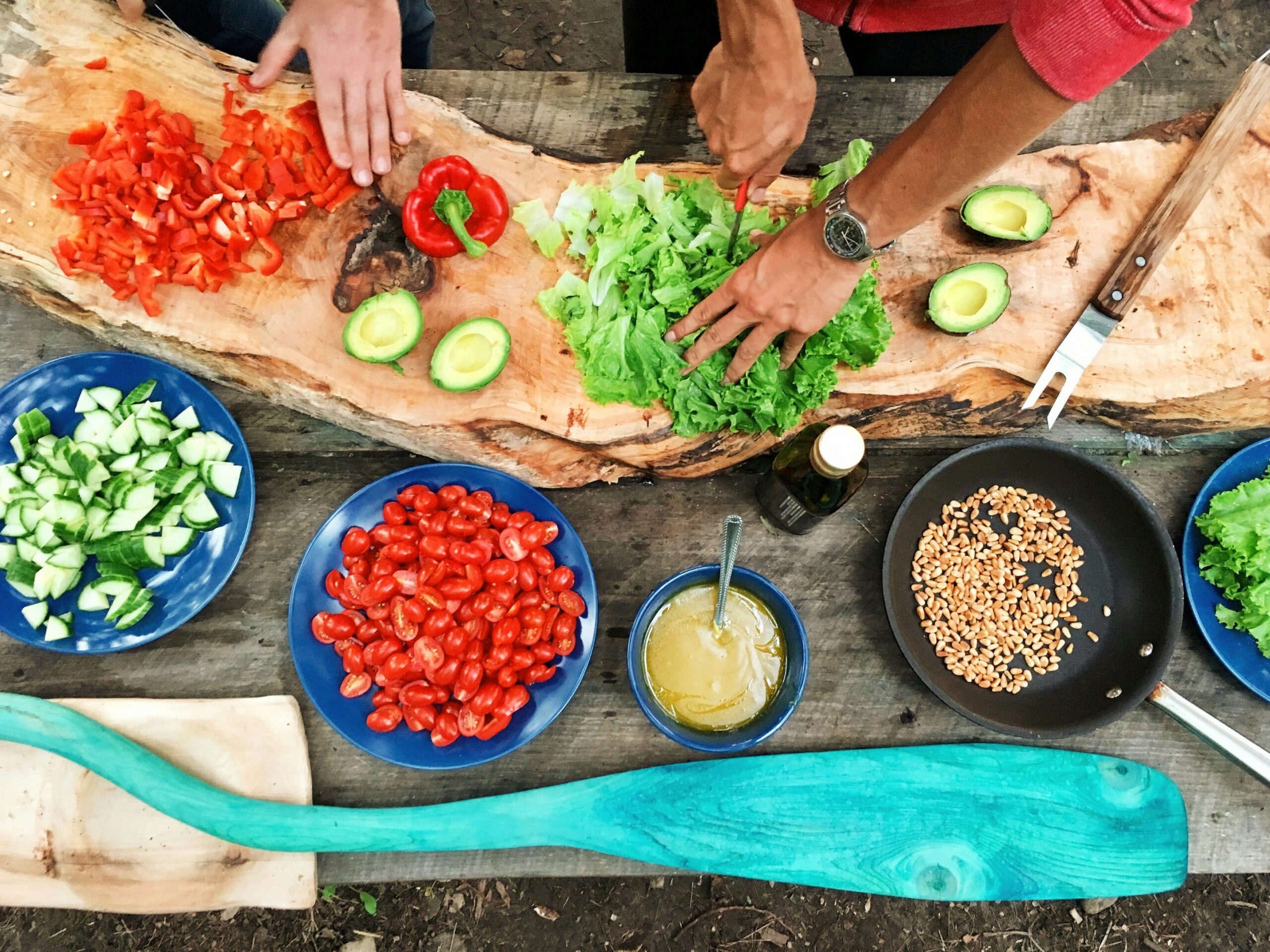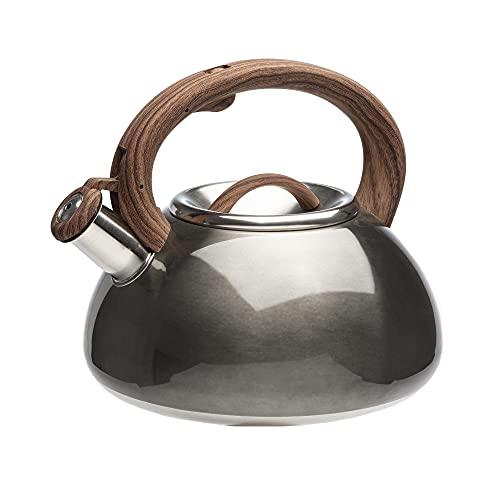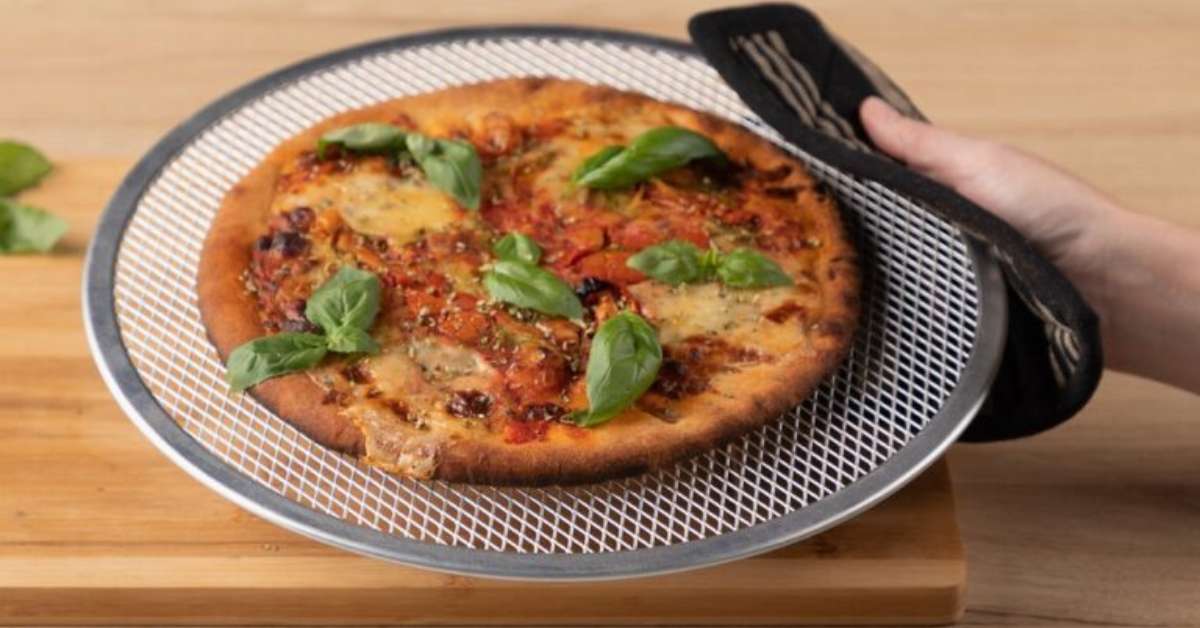To stir fry in a wok, cook your protein and vegetables separately, then combine them after both are fully cooked. Choose one vegetable per stir-fry, and add liquid only after everything is more or less finished cooking.
This method ensures the ingredients retain their individual flavors and textures in the final dish.
Table of Contents
ToggleBenefits Of Stir-Frying In A Wok
Stir-frying is a cooking technique that originated in China and has gained popularity worldwide due to its numerous benefits. When it comes to stir-frying, using a wok is essential for achieving the best results. Let’s explore the benefits of stir-frying in a wok:
Even Quick Cooking
One of the advantages of stir-frying in a wok is the even and quick cooking it offers. The unique shape of a wok allows heat to be distributed evenly, ensuring that all ingredients are cooked uniformly. Its high, sloping sides make it easier to toss and flip the food, promoting fast cooking times.
Retains Nutrients and Flavors
Stir-frying in a wok is known for retaining the natural flavors and nutrients of the ingredients. The high heat and fast cooking technique preserve the vibrant colors, textures, and nutritional values of the vegetables and proteins used. This means you can enjoy delicious and healthy meals without compromising on taste or nutrients.
Versatile and Customizable
The versatility and customization options that come with stir-frying in a wok are unparalleled. You can stir-fry a wide variety of ingredients, from different types of proteins like chicken, beef, or shrimp to an array of vegetables such as broccoli, bell peppers, or baby corn. Each dish can be tailored to suit your preferences by adjusting the seasonings, sauces, and spices added.
With the benefits of even and quick cooking, retained nutrients and flavors, and the ability to create personalized dishes, it’s no wonder that stir-frying in a wok is a favored cooking method. So grab your wok and start exploring the endless possibilities of stir-frying!
Essential Tools And Ingredients For Stir-Frying
Wok – the Heart of Asian Cooking
A wok is the essential tool for stir-frying, and it is the heart of Asian cooking. Its unique shape and design allow for quick and even cooking by distributing heat evenly. Traditionally made of carbon steel, woks are now available in different materials, such as stainless steel and cast iron. Choose a wok that is lightweight, has a long handle, and a flat bottom that sits securely on the stove.
High Smoke Point Oil
When it comes to stir-frying, it’s important to use oil with a high smoke point. This ensures that the oil won’t burn, giving your dish a bitter taste. Some commonly used oils for stir-frying include vegetable oil, peanut oil, and sesame oil. These oils can withstand high heat and add a lovely flavor to your stir-fried dishes.
Protein – Chicken, Beef, Shrimp
Protein is a key component of stir-fried dishes. Popular choices for protein include chicken, beef, and shrimp. These meats cook quickly in a hot wok and absorb the flavors of the other ingredients. For the best results, slice the protein thinly and marinate it before stir-frying to enhance its taste and tenderness.
Fresh Vegetables – Broccoli, Bell Peppers
Fresh vegetables are essential for adding flavor, color, and texture to stir-fries. Broccoli and bell peppers are excellent choices for stir-frying due to their crunchiness and ability to retain their vibrant colors. Cut the vegetables into bite-sized pieces for even cooking and add them to the wok after stir-frying the protein.
Aromatics – Garlic, Ginger
Aromatics like garlic and ginger are key ingredients for adding depth and fragrance to stir-fried dishes. Mince or finely chop the garlic and ginger to release their flavors. Add them to the hot wok with the protein to infuse the dish with their aromatic goodness.
Sauce – Soy Sauce, Oyster Sauce
A flavorful sauce is what brings all the elements of a stir-fry together. Soy sauce and oyster sauce are commonly used in stir-frying to add a savory and umami-rich taste. You can customize the sauce by adding other ingredients like chili sauce, hoisin sauce, or rice vinegar to suit your taste preferences. Add the sauce towards the end of the stir-frying process, allowing it to coat the ingredients beautifully.
Preparing The Wok For Stir-Frying
Seasoning the Wok
Before you start stir-frying, it’s crucial to season your wok. Seasoning helps to create a natural, non-stick surface and prevents rusting. To season your wok, follow these steps:
- Wash the wok with hot, soapy water to remove any factory coating.
- Rinse and dry the wok thoroughly.
- Heat the wok over low heat for a few minutes to evaporate any remaining moisture.
- Add a thin layer of oil to the wok and spread it evenly on the cooking surface.
- Heat the wok on medium-high heat until it starts to smoke.
- Tilt the wok and carefully swirl the oil to coat the sides.
- Allow the wok to cool, and wipe off any excess oil with a paper towel.
Your wok is now seasoned and ready to use for stir-frying delicious dishes.
Choosing the Right Heat Source
The heat source you use plays a significant role in stir-frying. Ideally, it would be best if you used a gas stove as it provides instant heat control and high temperatures needed for stir-frying. Electric stoves can be used but may offer a different level of heat control and intensity than gas stoves.
If using an electric stove, ensure that the wok sits flat on the burner without any wobbling. This ensures even heat distribution and efficient cooking. Consider using a wok ring or a flat-bottomed wok if your electric stove requires it.
Achieving the Ideal Wok Temperature
Having the right wok temperature is crucial for successful stir-frying. Here are some tips to help you achieve the ideal wok temperature:
- Preheat the wok on high heat for a few minutes until it starts to smoke slightly.
- Add oil to the wok and swirl it around to coat the surface.
- Wait for the oil to heat up and shimmer. This indicates that the wok is at the ideal temperature for stir-frying.
Remember, a properly heated wok ensures that your ingredients cook quickly and evenly, resulting in a flavorful stir-fry.
Proper Stir-Frying Techniques
Cutting Ingredients Into Uniform Sizes
One of the key techniques for successful stir-frying is cutting your ingredients into uniform sizes. This ensures that everything cooks evenly and at the same rate, resulting in a harmonious blend of flavors and textures.
Whether it’s protein, such as chicken or beef, or vegetables, like peppers and broccoli, take the time to slice or dice them into similar shapes and sizes. This not only makes cooking easier but also ensures that each ingredient gets the right amount of heat and cooking time.
Preparing Proteins for Stir-Frying
When it comes to stir-frying proteins, such as chicken or beef, it’s important to properly prepare them for optimal flavor and tenderness. Start by marinating the meat in a mixture of soy sauce, garlic, ginger, and other seasonings for at least 15 minutes. This helps to infuse the flavors and tenderize the meat.
Once marinated, drain the meat to remove any excess liquid, as this can cause steaming rather than stir-frying. Preheat your wok until it’s smoking hot, then add a small amount of oil and stir-fry the protein until it’s browned and cooked through.
Stir-Frying Vegetables For the Perfect Texture
To achieve the perfect texture when stir-frying vegetables, it’s important to follow a few simple steps. Start by preheating your wok until it’s smoking hot. Add a small amount of oil and swirl it around to coat the surface. Next, add your vegetables, starting with the ones that take the longest to cook, such as broccoli or carrots.
Stir-fry them for a couple of minutes until they begin to soften but are still crisp. Then add the remaining vegetables and continue to stir-fry for another few minutes until they are tender-crisp. The key is to maintain the vibrant colors and a slight crunch, so avoid overcooking.
Incorporating Aromatics For Flavor Enhancement
Aromatics play a vital role in stir-frying by adding depth and complexity to the dish. They are usually a combination of garlic, ginger, and scallions, but you can also experiment with other herbs and spices to suit your taste. To incorporate aromatics into your stir-fry, start by preheating your wok and adding a small amount of oil.
Once the oil is hot, add the minced garlic, grated ginger, and chopped scallions and stir-fry them for a few seconds until fragrant. The intense heat of the wok will release their flavors and infuse the entire dish. Remember to stir constantly to prevent burning, as burnt aromatics can turn bitter.
In conclusion, proper stir-frying techniques are essential for creating delicious and flavorful dishes. By cutting ingredients into uniform sizes, preparing proteins correctly, stir-frying vegetables with the perfect texture, and incorporating aromatic flavors, you can elevate your stir-fry game to the next level.
So, fire up your wok, gather your ingredients, and get ready to stir-fry like a pro!
Mastering The Stir-Frying Process
Stir-frying is a versatile cooking method that allows you to create flavorful and healthy dishes in no time. To truly master the art of stir-frying, it’s important to understand and follow the proper process. In this guide, we will walk you through the key steps of stir-frying in a wok, from preheating the wok to incorporating the sauce evenly. Let’s get started!
Preheating the Wok
The first step in stir-frying is preheating your wok. Heat is crucial in creating that characteristic smoky flavor and perfectly cooked stir-fry. Place your wok on the stovetop over high heat and let it heat up for a few minutes. To check if it’s hot enough, sprinkle a few drops of water onto the surface of the wok. If they sizzle and evaporate quickly, your wok is ready to go.
Adding and Arranging the Ingredients
Once your wok is preheated, it’s time to add your ingredients. Start by adding a small amount of oil to the wok and swirl it around to coat the surface. This will prevent the ingredients from sticking. Next, add your proteins, such as chicken, beef, or shrimp, and cook them until they are almost done. Remove the proteins from the wok and set them aside.
Next, add your vegetables to the wok, starting with the ones that take longer to cook, such as broccoli or carrots. Stir-fry them until they are crisp-tender. It’s important to stir constantly to ensure even cooking and to prevent the vegetables from becoming soggy.
Cooking Proteins and Vegetables Separately
A common mistake in stir-frying is cooking the proteins and vegetables together. To achieve the best results, it’s important to cook them separately. This allows you to control the cooking time of each ingredient and ensures that they are cooked to perfection.
By cooking the proteins first, you can develop a nice sear and retain their juiciness. Once they are almost cooked, remove them from the wok and set them aside. Then, cook the vegetables separately, as they require less time to cook. This way, you can preserve their vibrant colors and crisp texture.
Combining All Ingredients at the End
After the proteins and vegetables are cooked separately, it’s time to bring them together. Return the cooked proteins to the wok and add the cooked vegetables. Stir-fry for a minute or two to allow the flavors to meld and the ingredients to heat through.
Incorporating the Sauce Evenly
The final step in stir-frying is adding the sauce. Pour the sauce evenly over the ingredients in the wok and stir-fry for another minute or two. The sauce will thicken and coat the ingredients, enhancing the flavors of the dish.
And there you have it – the key steps to master the stir-frying process. Preheating the wok, adding and arranging the ingredients, cooking proteins and vegetables separately, combining all ingredients at the end, and incorporating the sauce evenly will result in a delicious and perfectly cooked stir-fry every time. Happy cooking!
Tips For Perfecting Your Stir-Fry
When it comes to stir-frying, mastering a few key techniques can make all the difference in creating a delicious and satisfying dish. In this section, we’ll explore four important tips for perfecting your stir-fry:
- Maintaining high heat throughout the cooking process.
- Stir-frying in small batches.
- Adjusting seasoning and sauce to taste.
- Adding a finishing touch with herbs or sesame oil.
Let’s dive in and discover the secrets to stir-frying like a pro!
Maintaining High Heat Throughout the Cooking Process
One of the most important aspects of stir-frying is maintaining high heat throughout the cooking process. In order to achieve that perfect, crispy texture and vibrant flavors, it’s crucial to cook your ingredients at a high temperature. This is where a wok comes in handy, as its shape allows for even heat distribution.
To maintain high heat, start by preheating your wok over medium-high heat for a few minutes. Once the wok is hot, add a small amount of oil and swirl it around to coat the surface. Then, quickly add your ingredients and continuously stir-fry them using a spatula or tongs. Keeping the ingredients moving ensures they cook evenly and don’t stick to the wok.
Stir-Frying in Small Batches
Another tip for perfecting your stir-fry is to stir-fry in small batches. Overcrowding the wok with too many ingredients can result in steaming rather than stir-frying, leading to soggy and flavorless dishes. To avoid this, keep the ingredients in your wok to a manageable size and stir-fry them in batches.
By stir-frying in small batches, you give each ingredient enough space to cook evenly and develop that wonderful charred flavor. It may take a bit more time, but the end result will be well worth it. Plus, you can combine the cooked ingredients at the end to ensure they all marry together perfectly.
Adjusting Seasoning and Sauce to Taste
Seasoning and sauce play a crucial role in stir-fry dishes, but the right balance can vary depending on personal preference. To achieve the perfect flavor profile, it’s important to adjust the seasoning and sauce to taste.
Start by adding a small amount of seasoning, such as salt, pepper, or spices, and taste as you go. This allows you to gradually build the flavor without making the dish too salty or overpowering. Similarly, when adding sauce, begin with a small amount and drizzle it over the stir-fry. Taste and adjust as needed, adding more sauce for a bolder flavor or less if you prefer a lighter touch.
Adding a Finishing Touch with Herbs or Sesame Oil
To elevate your stir-fry to the next level, consider adding a finishing touch with herbs or sesame oil. Fresh herbs like cilantro, basil, or green onions can bring a burst of freshness and vibrant colors to your dish. Simply sprinkle them on top of the stir-fry right before serving.
Sesame oil, on the other hand, adds a nutty and aromatic flavor that compliments a wide range of stir-fry recipes. Drizzle a small amount over the finished dish and toss to evenly distribute. The sesame oil will add depth and richness to your stir-fry, making it truly irresistible.
Remember, perfecting your stir-fry takes practice and experimentation. So don’t be afraid to get creative, try new ingredients and flavors, and, most importantly, have fun in the kitchen!
Frequently Asked Questions On How To Stir Fry In A Wok
What Are The 3 Rules Of Stir-Frying?
The 3 rules of stir-frying are:
1. Cook the protein and vegetables separately and combine them after both are fully cooked.
2. Choose one vegetable per stir-fry.
3. Add liquid only after everything is more or less finished cooking.
Do You Put Oil In a Wok For Stir Fry?
Yes, you should put oil in a wok for stir fry.
What Order Do You Stir Fry In A Wok?
To stir fry in a wok, follow this order:
1. Heat the wok following the “Hot Wok, Cold Oil” rule.
2. Add aromatics.
3. Add longer-cooking ingredients.
4. Add shorter-cooking ingredients, if applicable.
5. Add sauce/slurry.
6. Add garnishes.
Conclusion
To become a master of stir-frying in a wok, there are a few key guidelines that you should follow. First and foremost, it’s important to cook your protein and vegetables separately, ensuring that each ingredient is fully cooked before combining them.
Another important rule is to choose one vegetable per stir-fry to maintain the integrity of each flavor. Lastly, remember to add liquid only after everything is nearly finished cooking to prevent an overly soggy dish. By following these guidelines, you’ll be able to create delicious and well-balanced stir-fry dishes every time.
The beauty of stir-frying lies in its versatility, allowing you to experiment with different ingredients, flavors, and seasonings to suit your tastes. Whether you prefer chicken, beef, or shrimp, the wok is your canvas to explore the world of Asian-inspired flavors.
Embrace the sizzling heat of the wok and let your creativity shine through by trying out different combinations and techniques. Stir-frying in a wok is not only a delicious way to cook, but it also brings a sense of excitement and flair to your kitchen.
So, grab your wok, gather your ingredients, and start stir-frying like a pro!






